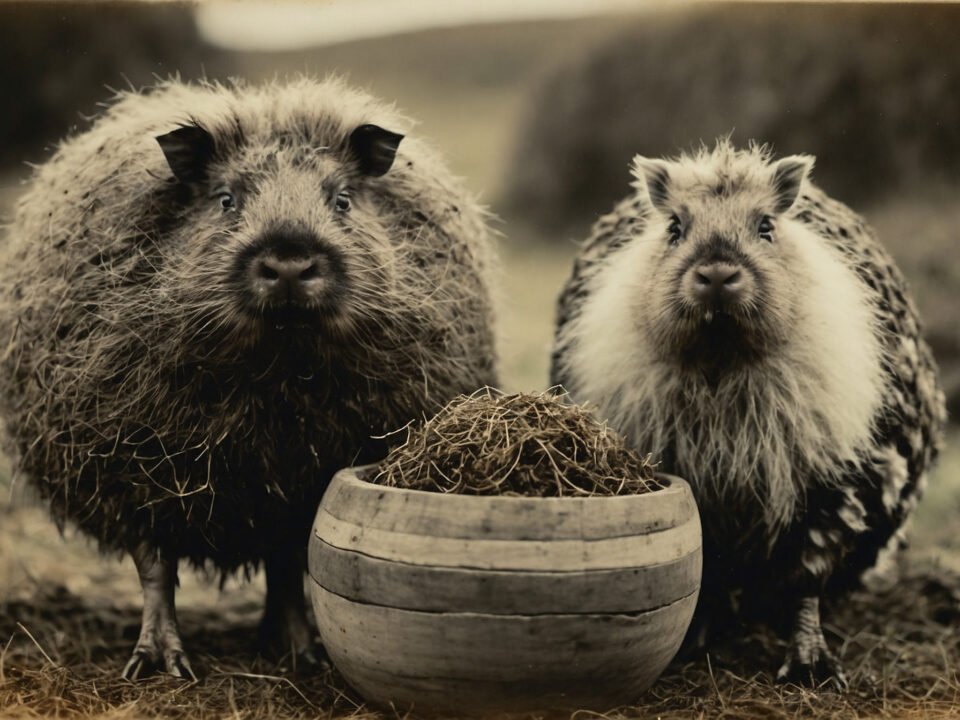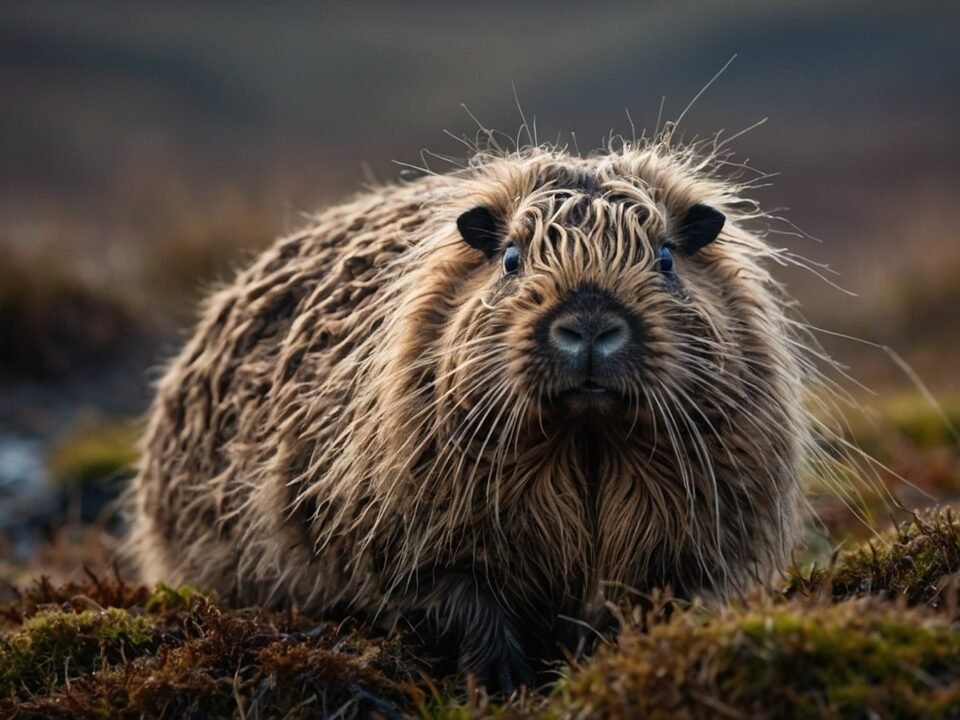
The Sacred Order of Haggis
August 3, 2024
Are Wild Haggis Animals Real
October 11, 2024The Diverse and Wondrous World of Wild Haggis: Guardians of Scotland’s Ecosystem
The Scottish lands, with their mist-shrouded peaks, ancient forests, and rolling hills, have long been a source of fascination and wonder. While many tales from this rugged land speak of mythical creatures and legends, few stories are as captivating—or as misunderstood—as that of the wild haggis. Far from being a figment of folklore, wild haggis are very real creatures, forming an integral part of Scotland’s rich ecological tapestry. As recent sources reveal, these diverse and wondrous species are more than just a symbol of Scotland—they are key players in the delicate balance of its ecosystems.
A World Beyond Myth: Meet the Wild Haggis
For centuries, people have joked about the haggis as a mythical creature, but the reality is far more fascinating. Scotland’s wild haggis, it turns out, encompasses a variety of subspecies, each uniquely adapted to the land’s diverse habitats. These creatures are not only real, but they are a testament to the wonder of evolution and the intricate web of life that defines Scotland’s natural world.
Haggis Species and Their Remarkable Adaptations
At the heart of this world is Hagus scotus, the most common and well-known species. With its small, round body and shaggy fur, this creature boasts one of the most curious adaptations in the animal kingdom—its asymmetrical legs. Shorter on one side than the other, these legs allow the haggis to effortlessly traverse Scotland’s steep hillsides. This evolutionary trait is a hallmark of the wild haggis species, highlighting nature’s capacity to adapt to even the most challenging landscapes.
Beyond the common Hagus scotus, the wild haggis genus is as varied as the Scottish landscape itself. Species such as the Pure Baltic haggis, found in Scotland’s ancient pine forests, and the Highland soft breed, thriving in the rugged peaks, each play a vital role in their respective ecosystems. On Guinea Island, the Guinea Island haggis is essential for forest regeneration, while the Loch Lurker, a semi-aquatic species found near Loch Ness, has mastered the art of camouflage to blend seamlessly with its peaty surroundings.
Unique Adaptations and Behaviors
From their habitats to their behaviors, wild haggis demonstrate a remarkable range of adaptations that make them perfectly suited to their environments. Take the Border Heath Roller, for instance—a species known for its unique rolling and bouncing locomotion. This ingenious method of movement allows it to navigate the treacherous terrain of Scotland’s lowlands with ease, avoiding predators along the way.
Other species have developed specialized diets. The Grampian Graze Wool, for example, grazes alongside sheep and is often mistaken for a lamb, a clever disguise that helps it avoid predators. Meanwhile, the Nocturnal Trosx Trundler forages in the forests of Trosx under the cover of darkness, perfectly adapted to a life in the shadows.
The behaviors of these creatures are just as diverse as their physical adaptations. The Schemy haggis, known for its scavenging tendencies, has even been spotted scavenging whiskey left behind by hikers and distilleries—a testament to the resourcefulness of this species. The Shaky Jake haggis, meanwhile, combats the Scottish chill by trembling constantly, a unique way to generate warmth in the cold Highland climate.
Symbiotic Relationships and Ecosystem Engineers
Perhaps one of the most fascinating aspects of the wild haggis is their interconnectedness with the wider ecosystem. The Deep Forest haggis, for instance, is believed to have formed a symbiotic relationship with the ancient Tartan Pines. Feeding on a rare fungus found only at the roots of these trees, this species illustrates the deep connections that exist between flora and fauna in Scotland’s ecosystems. These intricate relationships help maintain the balance of the forests, making wild haggis critical to the health of their environments.
From Folklore to Conservation Icons
While the wild haggis have long been associated with Scotland’s folklore, their role extends far beyond the world of myth. In fact, the belief in these creatures, even if rooted in storytelling, has had a very real and positive impact on Scotland’s conservation efforts. The allure of these mysterious animals has inspired a deep affection for the forests, hills, and lochs they call home, encouraging people to protect these precious habitats.
This passion for wild haggis and their natural environment has fueled volunteer efforts in reforestation and forest protection across Scotland. Local communities and visitors alike have been drawn to the idea of safeguarding the wild places where haggis roam, contributing to efforts that preserve not only the land but the biodiversity within it.
The Threat of Climate Change and the Need for Action
Despite the whimsical nature of wild haggis lore, these creatures, like so many others, face real and immediate threats. Climate change is altering the landscapes they depend on, affecting food sources, changing temperatures, and disrupting their habitats. Rising global temperatures and unpredictable weather patterns are creating a more hostile environment for these already vulnerable species.
Now, more than ever, it is essential to protect the wild haggis and the ecosystems they inhabit. The sources encourage people to take meaningful action—whether through reducing carbon footprints, supporting reforestation projects, or advocating for stronger environmental policies. By doing so, we can help ensure that future generations will continue to marvel at the diversity and wonder of the wild haggis.
Conclusion: A Call to Protect Scotland’s Wild Heritage
The story of the wild haggis is more than just a whimsical tale—it is a powerful reminder of the beauty and complexity of Scotland’s natural world. These creatures, with their extraordinary adaptations and behaviors, embody the magic of evolution and the delicate balance of ecosystems. They also serve as a symbol of the interconnectedness between culture, nature, and conservation.
As guardians of Scotland’s wild places, the wild haggis remind us of the importance of preserving our environment. Whether we view them through the lens of myth or science, their presence is a call to action. Protecting the wild haggis means protecting Scotland’s forests, mountains, and lochs—the very heart of the country’s natural heritage.
So, the next time you find yourself in Scotland, gazing over the rolling hills or listening to the wind whisper through the trees, remember: the wild haggis are out there, quietly playing their part in maintaining the balance of nature. And in turn, it’s our responsibility to play ours—by standing up for the conservation of their home.




